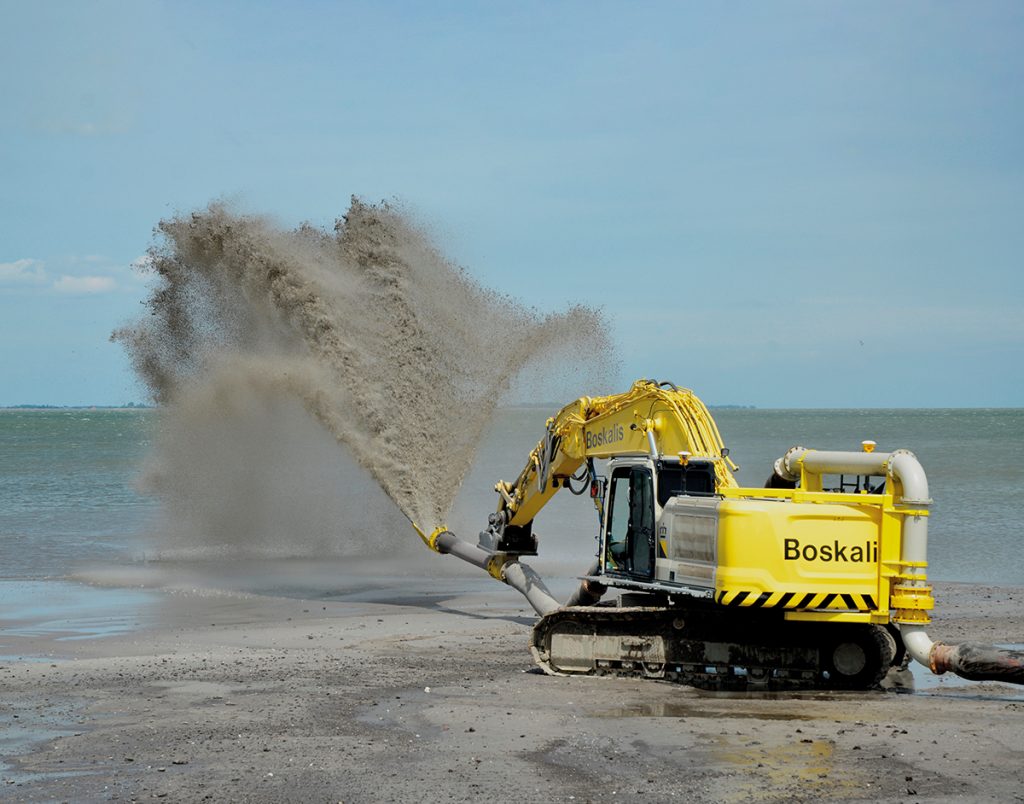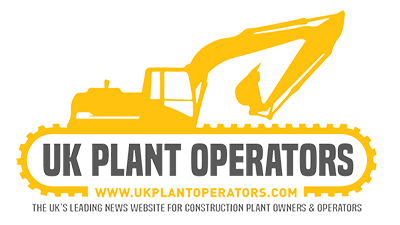![]()

Shallow Waters
Ideally, this is what the planners would like to have done with the current works, and a 5km stretch of the dike near the village of Warder. This was not possible though because the water is too shallow for one of these large vessels to get anywhere near the shore to supply the 500,000 cubes of sand needed to construct the new dike.
Further complicating matters was the roughly 2.0m layer of peat at the bottom of the murky water near the current dike, below which are many metres of mud.
Unable to support the weight of any mobile machines, this quickly ruled out the normal use of an excavator and dozer to level sand pumped ashore.
Trucking all the required sand (roughly 25,000 loads) along the narrow road on the land side of the dike would have been unpopular with local residents. The only real option was to bring the sand over the water.
Boskalis’ engineering department at Papendrecht, near Rotterdam, was charged with coming up with a solution. After quite a bit of brainstorming, the radical concept they devised relies on the rainbowing technique. Not from a dredging vessel, but from an excavator!
The result of their efforts is amazing and really does have to be seen to be believed because a roughly 17.0m arc of sand and water is rainbowed out from the front of a new Cat 336.
Material supplied via a 30cm-diameter flexible pipe (lengths of 24.0m), is conveyed through a sturdy metal pipe up the rear of the excavator and along the top of the main structure after which it is plumped into a flexible pipe.
Attached to a quick-attachment system at the end of the excavator’s standard 9.0m boom and stick is a 3.0m length of 30cm-diameter rigid pipe. The bolt-on spreading device at the end reduces the diameter, creating the pressure to blast the material out and allow the operator to create an even blanket of sand.
It has not been put on the scales, but in its current guise the excavator, complete with its slightly heavier rear counterweight, is believed to weigh around 42.0-43.0t. A bit heavier than the standard 37.4t of a Cat 336, this is the maximum load the soft land can support.























